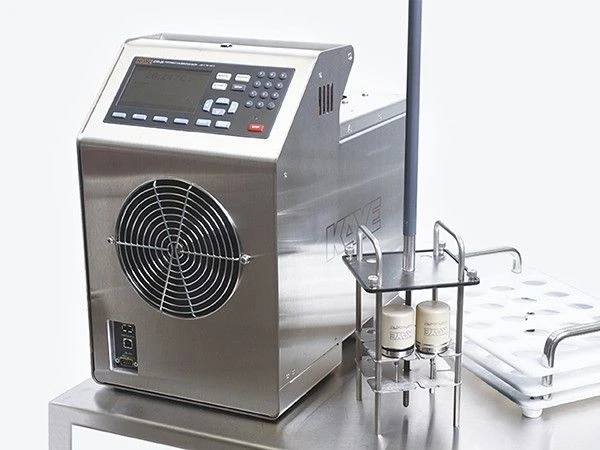Accurate temperature measurement is critical in many industries such as pharmaceuticals, manufacturing, food processing, and environmental monitoring. To ensure precision, regular calibration of temperature sensors and instruments is necessary. Two of the most widely used devices for temperature calibration are the Dry Block Calibrator and the Liquid Bath Calibrator. Each offers unique advantages and is suited for different calibration needs. This article delves into both types of calibrators, comparing their features, benefits, and applications.
What is a Dry Block Calibrator?
A dry block calibrator, also known as a dry well calibrator, is a portable temperature calibration device that uses a metal block with holes or wells into which temperature probes or sensors can be inserted. The metal block is heated or cooled to a set temperature, providing a stable and uniform environment to test and calibrate thermometers, thermocouples, RTDs, and other temperature sensors.
Dry block calibrators are popular for their portability, ease of use, and relatively fast stabilization times. They do not require the use of liquids, which makes them clean, safe, and low-maintenance. The temperature range of dry block calibrators typically spans from sub-zero temperatures (using cooling accessories) up to around 700°C, depending on the model.
What is a Liquid Bath Calibrator?
A liquid bath calibrator, sometimes called a liquid temperature calibrator or liquid bath, is a temperature calibration device that uses a liquid medium—such as oil, water, or other fluids—to maintain a uniform temperature. Temperature sensors are immersed directly into the liquid bath, which is heated or cooled to the target temperature.
Liquid bath calibrators are known for their superior temperature uniformity and stability compared to dry block calibrators. They are especially useful for calibrating sensors that require immersion in a fluid environment or for applications demanding highly accurate temperature measurements. The temperature range can vary widely depending on the liquid used, from near freezing to several hundred degrees Celsius.
Key Differences Between Dry Block and Liquid Bath Calibrators
- Temperature Uniformity and Stability
- Liquid bath calibrators generally offer better temperature uniformity and stability because the liquid evenly transfers heat to the sensors. Dry block calibrators may have slight temperature gradients, especially if the sensor is placed near the edge of the block.
- Portability and Convenience
- Dry block calibrators are more portable and easier to handle since they do not involve liquids that can spill or require special disposal. Liquid bath calibrators tend to be bulkier and require more careful handling and maintenance.
- Safety and Maintenance
- Dry block calibrators are safer and cleaner to use, without the risks of burns or spills from hot liquids. Liquid baths require regular cleaning, liquid replacement, and safe disposal of fluids.
- Applications
- Dry block calibrators are ideal for field calibration and quick checks due to their portability. Liquid bath calibrators are preferred in laboratory settings or whenever the highest accuracy and temperature uniformity are essential.
Applications of Dry Block Calibrators
Dry block calibrators are widely used in industries where quick and reliable temperature calibration is needed on-site:
- HVAC system calibration and maintenance
- Food industry temperature monitoring
- Pharmaceutical manufacturing and quality assurance
- Calibration laboratories needing portable solutions
- Environmental monitoring equipment calibration
Applications of Liquid Bath Calibrators
Liquid bath calibrator are best suited for applications that demand high precision and sensor immersion:
- Calibration of temperature sensors used in fluid processes
- Pharmaceutical and biotech industries with strict temperature control requirements
- Research laboratories requiring accurate temperature standards
- Calibration of sensors for oil, chemical, and food processing plants
- Situations requiring calibration at very low or very high temperatures beyond dry block capabilities
Choosing Between Dry Block and Liquid Bath Calibrators
Selecting the right calibrator depends on your specific needs:
- For portable, quick, and clean calibrations with moderate accuracy, a dry block calibrator is the ideal choice.
- For laboratory-grade precision, especially when uniform immersion is necessary, a liquid bath calibrator is preferable.
- Consider factors such as temperature range, ease of use, maintenance requirements, and the type of sensors you need to calibrate.
Conclusion
Both dry block calibrators and liquid bath calibrators play vital roles in temperature calibration across various industries. Understanding their differences and applications will help you select the best tool to ensure accurate and reliable temperature measurements. Whether you require the portability and convenience of a dry block calibrator or the superior accuracy and uniformity of a liquid bath calibrator, investing in the right calibration equipment is crucial for maintaining quality, safety, and compliance in your operations.


